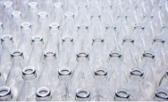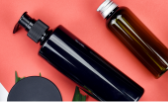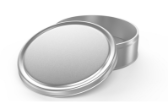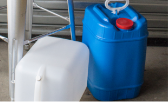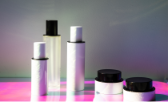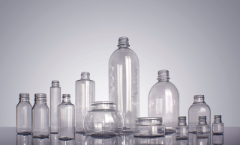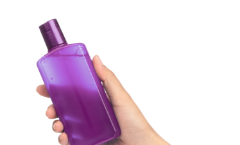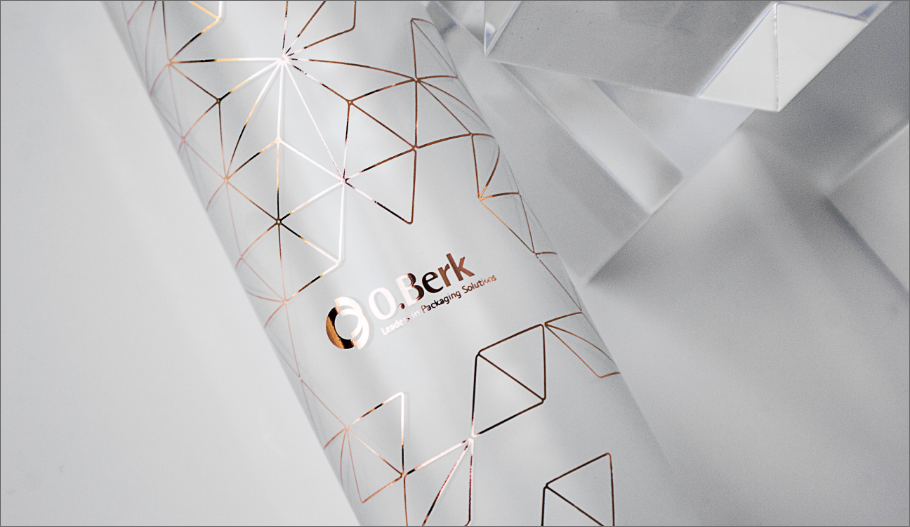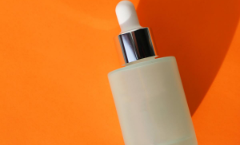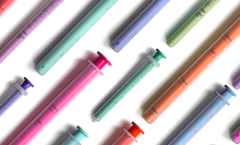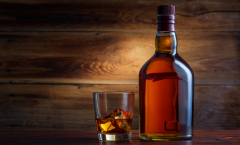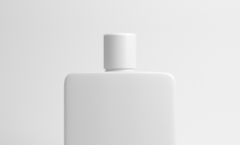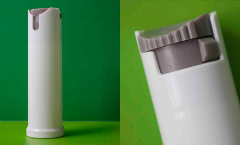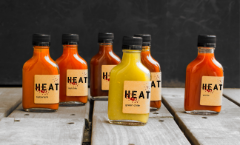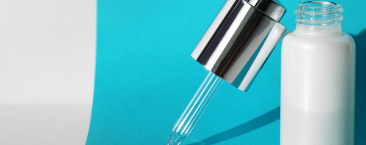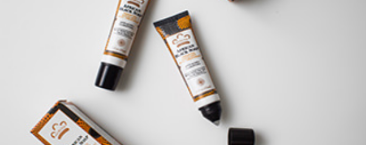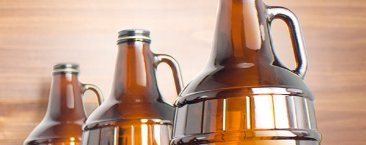A
ACID ETCHING
Glassware is immersed in an acid bath to create a smooth, frosted effect on the glass surface.
ACL - APPLIED COLOR LETTERING
Colored lettering or design of ceramic nature permanently fused onto glass bottle surface.
ACL LUG
A small protrusion or small depressed cavity in a base of bottle to act as a guide in positioning the bottle in the decorating machine for application of ACL.
ANNEALING
A controlled temperature method of gradually cooling glass containers in ovens or lehrs to relieve structural stresses and to make less brittle.
ANTIOXIDANT
A chemical substance that can be added to a plastic resin to minimize or prevent the effects of oxygen attack on the plastic (e.g. yellowing or degradation).
ANTISTATIC AGENT
A chemical substance that can be applied to the surface of a plastic bottle, or incorporated in the plastic from which the bottle is to be made. Its function is to render the surface of the plastic article less susceptible to accumulation of electrostatic charges which attract and hold fine dust on the surface of the bottle.
B
BLANK
The mold parts used in all glass container machines for preliminary formation of glass in preparation for completion of the glass containers in the finish mold where the bottles are blown. The blank forms the parison, hence the parison itself is at times referred to as the blank.
BLOOM
A surface film resulting from attack by the atmosphere or from deposition of smoke or other vapor.
BLOW AND BLOW
Expression used to identify the production principle of the IS machine making narrow neck containers. Glass is blown into the blank mold and later blown into the finish mold.
BLOW MOLDING
A method of fabrication in which a warm plastic parison (hollow tube) is placed between the two halves of a mold (cavity) and forced to assume the shape of that mold cavity by the use of air pressure.
BLUSHING
A surface whitening or discoloration of bottle. It is the result of physically induced (e.g. by impact) or chemically induced phase separation of the (1) ingredients in the plastic compound or (2) the molecular orientation of the plastic.
BOTTOM PLATE (GLASS)
The part of the mold equipment that forms the bottom of the bottle.
BOTTOM PLATE (PLASTIC)
That part of the mold which contains the heel (base radius) radius and the "push-up" of the container to be formed.
BUTTRESS THREAD
A design of thread profile (cross-section) which takes the form of a right triangle or slight modification of that form. It is usually positioned so that the right angle is at the bottom of the thread cross-section and adjacent to the neck of the bottle finish. The horizontal leg of the right triangle is the bearing surface for a matching cap thread.
C
CARBOY
A largeware container used principally for acids and chemicals.
CAPACITY
The amount of space inside a container provided for a given amount of product.
CERAMIC DECALS
Silk-screened ceramic inks are printed in registration on a paper carrier. The ceramic ink is then transferred to the glass or ceramic ware in a single pass. The ware is then fired in a lehr at 1100-1200T, fusing the ceramic decal to the glassware.
CERAMIC SPRAYING
Ceramic paints are sprayed onto the surface of the glassware. The ware is then fired in a lehr at 1100-1200° F fusing the ceramic spray to the glassware.
CHECK
A very fine closed crack in glass caused by localized heat shock.
CLOSURE
A term used to describe a metal or molded cap which affects a primary seal when properly applied to a container.
COLLAPSE
Contraction of the walls of a container.
COPOLYMER
A material whose chemical structure is made up of long chains of two differently structured chemical units (monomers) which repeat a more or less regular pattern in the chain.
CT FINISH
Continuous thread finish - an interrupted protruding helix on the neck of a container to accommodate a screw-type closure.
CYCLE
The complete, repeating sequence of operations in a process. In molding, the cycle time is the period of elapsed time between a certain point in one cycle and the same point in the next.
D
DENSITY
Weight per unit of volume of a substance, expressed in grams per cubic centimeter, pounds per cubic foot, etc.
DIE
Any tool or arrangement of tools designed to cut, shape or otherwise form materials to a desired configuration.
DOUBLE GOB
A special operation of IS machine in which two gobs of glass are blown simultaneously into containers in a double cavity-type mold.
E
EXTRUSION
The compacting of a plastic material and forcing of it through an orifice in more or less continuous fashion.
F
FILL POINT
The level to which a container must be filled to furnish a designated quantity of the contents.
FINISH (GLASS)
The glass surrounding the opening of a bottle. So called because when glass is hand blown, it is the last part formed.
FINISH (PLASTIC)
The plastic forming the opening of a bottle shaped to accommodate a specific closure.
FITMENT
A device used as a part of a closure assembly to accomplish a certain purpose such as a dropper, sprinkler, powder shaker, etc.
FLAME TREATING
A method of rendering inert thermoplastic objects receptive to inks, lacquers, paints, adhesives, etc. in which the object is bathed in an open flame to promote oxidation of the surface of the article.
FLASH
Extra plastic attached to a molding along the parting line; it must be removed before the part can be considered finished.
FLINT
A term used to describe a glass color which is perfectly clear and transparent.
G
G.P.I.
Glass Packaging Institute, an organization composed of most glass container producers to establish industry policies and standards (formerly G.C.M.I.).
GLASS
Three types of glass are specified by the U.S. Pharmacopoeia on the basis of chemical durability tests. Type I, II, and III are intended for packaging parenteral preparations.
- TYPE I Containers normally made of borosilicate glass having a highly resistant composition. The specification test, called the Powdered Glass Test, is applied to glass as such in crushed or powdered form.
- TYPE II Containers made of commercial soda-lime glass which may have been treated on the inside surface at a high temperature to obtain a great improvement in chemical resistance. The usual treatment dealkalized the glass surface to a significant depth producing a chemical resistance similar to that of Type 1, and is known as sulphur treatment.
- TYPE III Untreated glass containers made of commercial soda-lime glass of average or somewhat above average chemical resistance. The specification places a limit on the amount of alkaline material extracted in the Powdered Glass Test. This limit is, of course, much higher than that set for Type 1 ware.
H
HEAD SPACE
The space between the level of the contents in the neck of a bottle and the closure. It is intended to furnish space for expansion of product due to heat or other action after packing.
HEAT TRANSFER LABEL
A label applied to a container by transferring the label, preprinted on a substrate, to the container surface.
HOT STAMPING
Engraving operation for marking plastics in which roll leaf is stamped with heated metal dies onto the surface of the plastics. Ink compounds can also be used. By means of felt rolls, ink is applied to type and by means of heat and pressure, type is impressed into the material, leaving the marking compounds in the indentation.
I
IN-MOLD LABELING
This is a sophisticated and fairly new decorating method for injection-molded objects which utilizes polyester labels with a heat-activated release coat. During the mold-close cycle, with the combination of high-injection pressure and heat, the label adheres to the part surface in a heat-seal fashion. Nissha labels offer a combination of colors with mirror metallics.
INJECTION BLOW MOLDING
A two stage process where a preform or parison is injection molded. The bottle finish is formed at this time. The preform is then transferred to blow mold where the bottle takes its final shape.
L
LARGEWARE
A name given containers manufactured on machines especially designed for ware of over one gallon capacity.
M
MOLD (PLASTIC)
(v.) To shape plastic parts or finished articles by heat and pressure, (n.) The cavity into which the plastic composition is placed and from which it takes form.
MOLDS (GLASS)
A set of iron forms that are fastened on a bottle machine to provide a means of shaping a glass container.
N
NECK
The part of the container where the bottle cross-section decreases to form the finish.
NECK INSERT
Part of the mold assembly which forms the neck and finish. Sometimes called the "neck ring."
NECK RING
That part of the mold equipment which forms the finish of a bottle.
O
OFFSET (PRINTING)
A printing technique in which ink is transferred from a reservoir to a printing plate, from the inked printing plate the image is printed on a cylindrical rubber roll (blanket) and then to the object to be printed.
OPAL
An opaque, white glass used to make jars and bottles.
P
PAD PRINTING
Ideal for 3-dimensional, contoured objects, pad printing is an indirect-printing process. High-pigmentation ink with added tack is deposited on an etched-metal plate (cliché), where it fills the etched portions and is cleared from the non-etched portions of the plate by a "doctor blade." The remaining ink is then picked up from the etched portion of the plate by a soft-silicone pad which subsequently descends and releases the ink from the silicone pad to the ware being printed. Multicolors are done one at a time. Rotary-pad printing is used for very large volume requirements.
PARISON (GLASS)
A shaped tubular cylinder of molten glass from which a bottle is blown. Also called a "blank" or a "gob."
PARISON (PLASTIC)
The hollow plastic tube from which a container is blow molded.
PRESS AND BLOW
Expression used to identify the production principle of the Miller machine or IS machine with "62 Process" used in making wide mouth containers. A plunger presses glass into the blank mold, and the partially formed blank is later blown into the finish mold.
PROGRAMMING
The extrusion of a parison which differs in thickness in the length direction in order to equalize wall thickness of the blown container.
PROTOTYPE MOLD
A simplified mold construction often made from a light casting alloy or from epoxy resin in order to obtain information for the final mold or part design.
PUSH UP
The contour of the bottom of the plastic container designed in such a manner as to allow as even bearing surface on the outside edge and prevent the bottle from rocking.
R
RAISED GOLD/PALLADIUM DECORATING
Used to create a raised, precious-metal effect on glass or ceramic ware. A clear ceramic flux is applied and fired in a lehr. The gold or palladium is then screened exactly over the flux and then fired in a lehr.
RAMP
A small depressed cavity (detent) in the base of the bottle to act as a guide in positioning the bottle in the decorating machine for application of decoration.
REAMING
A method used to trim and size plastic bottle finishes. A special rotating cutting tool trims the sealing surface smooth and simultaneously reams (bores) the bottle opening to a desired size (also called coring).
S
SILK SCREEN PRINTING
This printing method in its basic form, involves laying a pattern of an insoluble material, in outline on a finely woven fabric, so that when ink is drawn across it, it is able to pass through the screen in the desired areas only.
S.P.I.
Society of the Plastics Industry.
SPLIT SCREEN PRINTING
A screen with a divider strip to separate colors in order to do multicolor silk screen labeling in a single operation.
SPRAY FROSTING
Ceramic paints formulated to look like acid etching are sprayed on the surface of the glassware and then fired in lehr.
SURFACE TREATING
Any method of treating a plastic so as to alter the surface and render it receptive to inks, lacquers and adhesives, such as chemical, flame or electronic treating.
STORAGE LIFE
The period of time during which a product can be stored under specified temperature conditions and remain suitable for use. Storage life is sometimes called shelf life.
T
THERIMAGE
Registered trademark of Dennison Manufacturing Company for their heat transfer label process.
TORQUE
Force in circular motion as applied to closure on a container, either to attach or remove the closure.









